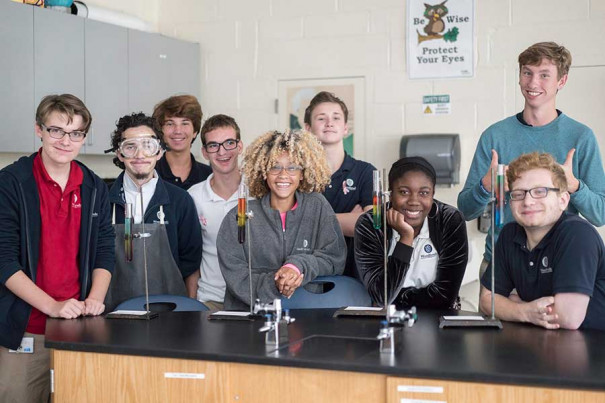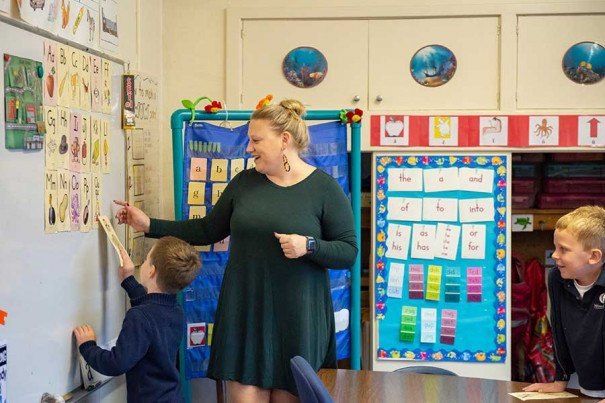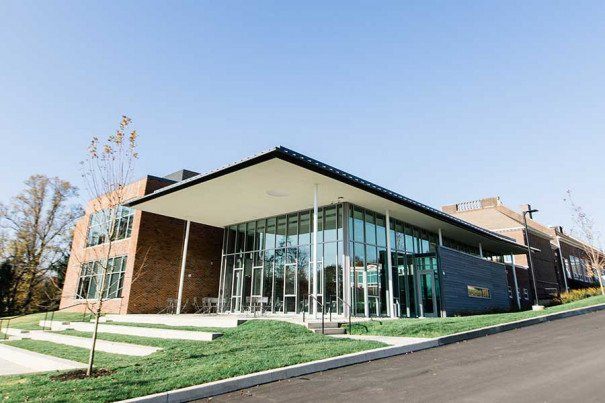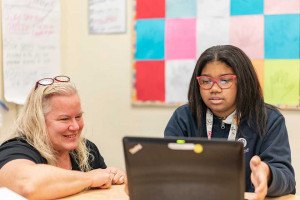3 Tips for Finding a School for Children with Learning Differences

Courtesy of Woodlynde School
For an inside look at what makes a Woodlynde School education so unique, we talked to MaryBeth Spencer, Head of Middle School at Woodlynde School, a private, K-12 college prep school in Wayne, Pennsylvania that has been teaching students with learning differences since 1976. Spencer brings 15 years of classroom experience as a Woodlynde teacher to her role as Head of Middle School.
Look for a school that radiates a sense of belonging

Courtesy of Woodlynde School
Because Woodlynde serves students with learning differences, many families come to Woodlynde feeling hopeless following struggles in traditional classroom environments.
“The feedback from enrolled families is consistent and clear,” Spencer says. “They choose Woodlynde because of the sense of community they feel.”
The warmth and sense of community at Woodlynde is likely a reflection of the fact that students and teachers share a mutual understanding: Just because a student learns differently, they should not be treated differently.
“Our classes are kept small and we’re all about individualized instruction,” Spencer says. “Teachers get to know students, both academically and personally. That tight-knit community fosters a sense of belonging, which is the first and most critical element in creating a school where young people thrive.”
Have a clear vision of what your student needs to succeed

Courtesy of Woodlynde School
Woodlynde can customize the learning experience for its students. With a four-to-one student-faculty ratio, learning at Woodlynde is scaffolded, allowing students to move from guided practice with a classroom teacher to independent application.
“I recommend parents have a clear vision of what their student needs,” Spencer says. “Focus less on the flashy amenities. Ask about the granular day-to-day details: How, specifically, classroom experience and social-emotional learning program will be tailored to meet my student’s specific needs.”
Each student is also assigned a learning specialist who manages an ever-evolving learning profile detailing strengths and opportunities for growth.
“Our specialists are honing skills and strategies in our students so that they can conquer whatever is in their way, giving them tools for school and life,” Spencer says.
Ask them what they’re doing to support executive functions

Courtesy of Woodlynde School
Trouble focusing, staying on task or turning in assignments on time? Your student could be struggling with executive functions. Tips and tricks to strengthen executive functioning are baked into the fabric of life at Woodlynde.
“Working memory — readily recalling new information learned, recognizing which step you are on or remembering what materials you need on hand — is a real struggle for students with an executive function deficit,” according to Spencer.
To combat difficulties, teachers and learning specialists are in the business of habit-building, using everything from individualized study guides, ed-tech apps and even analog photos of what a student’s desktop should look like at the start of a task!
“Our goal isn’t to get them to the end of a project or problem,” Spencer says. “It’s to show them the path to get there themselves.”
For more information about Woodlynde School or to visit today, click here.
This post was produced and paid for by Woodlynde School
